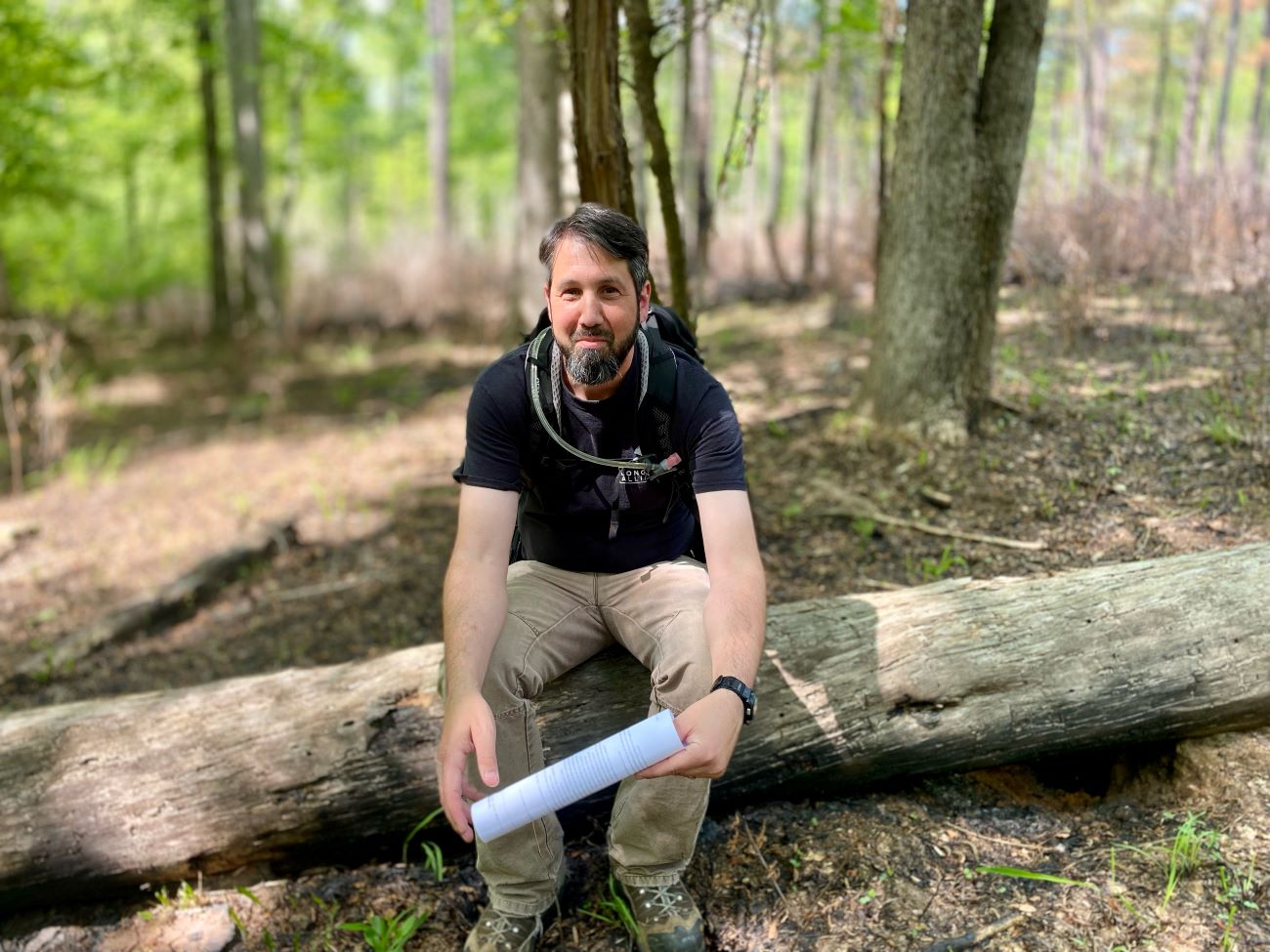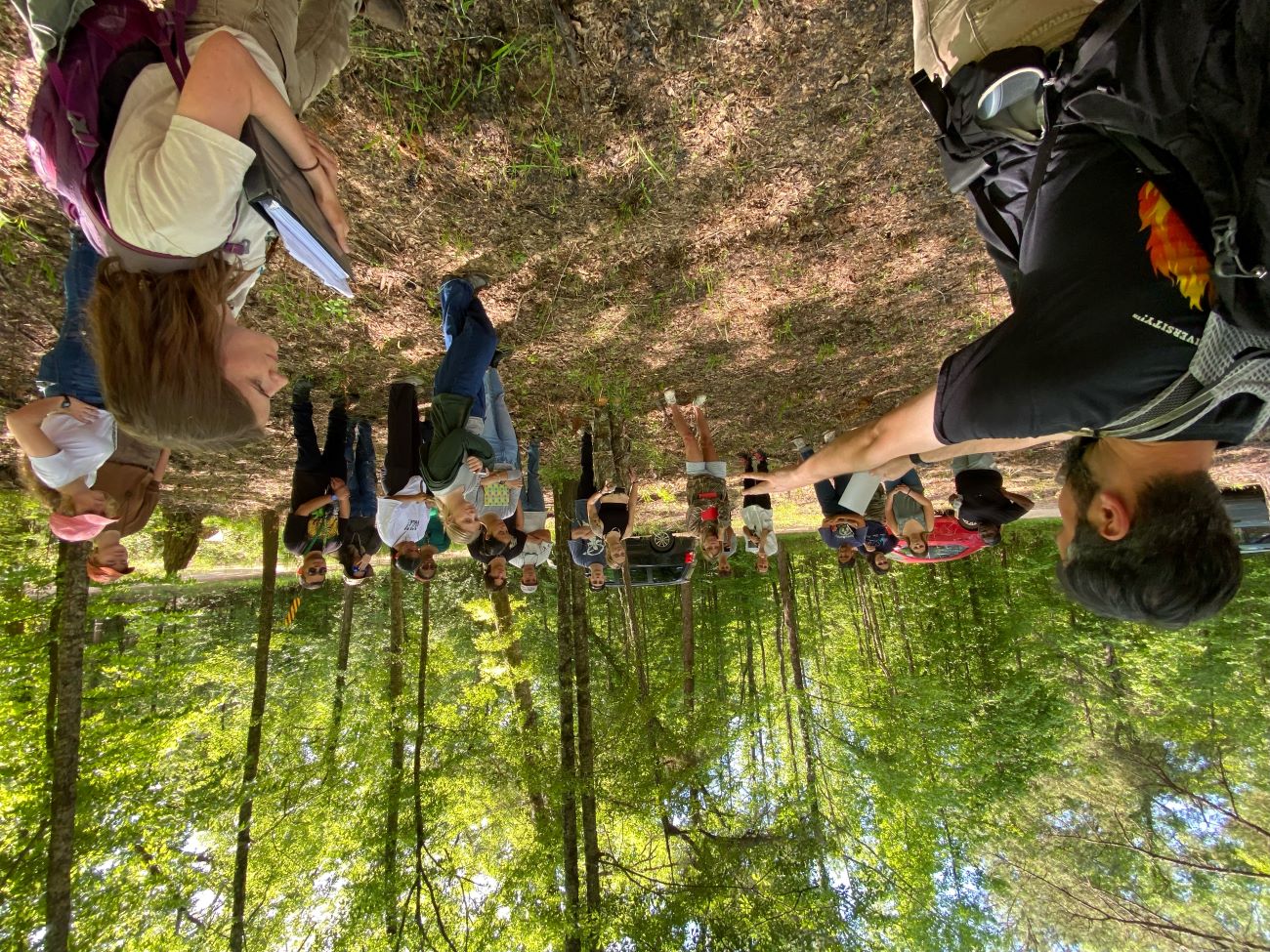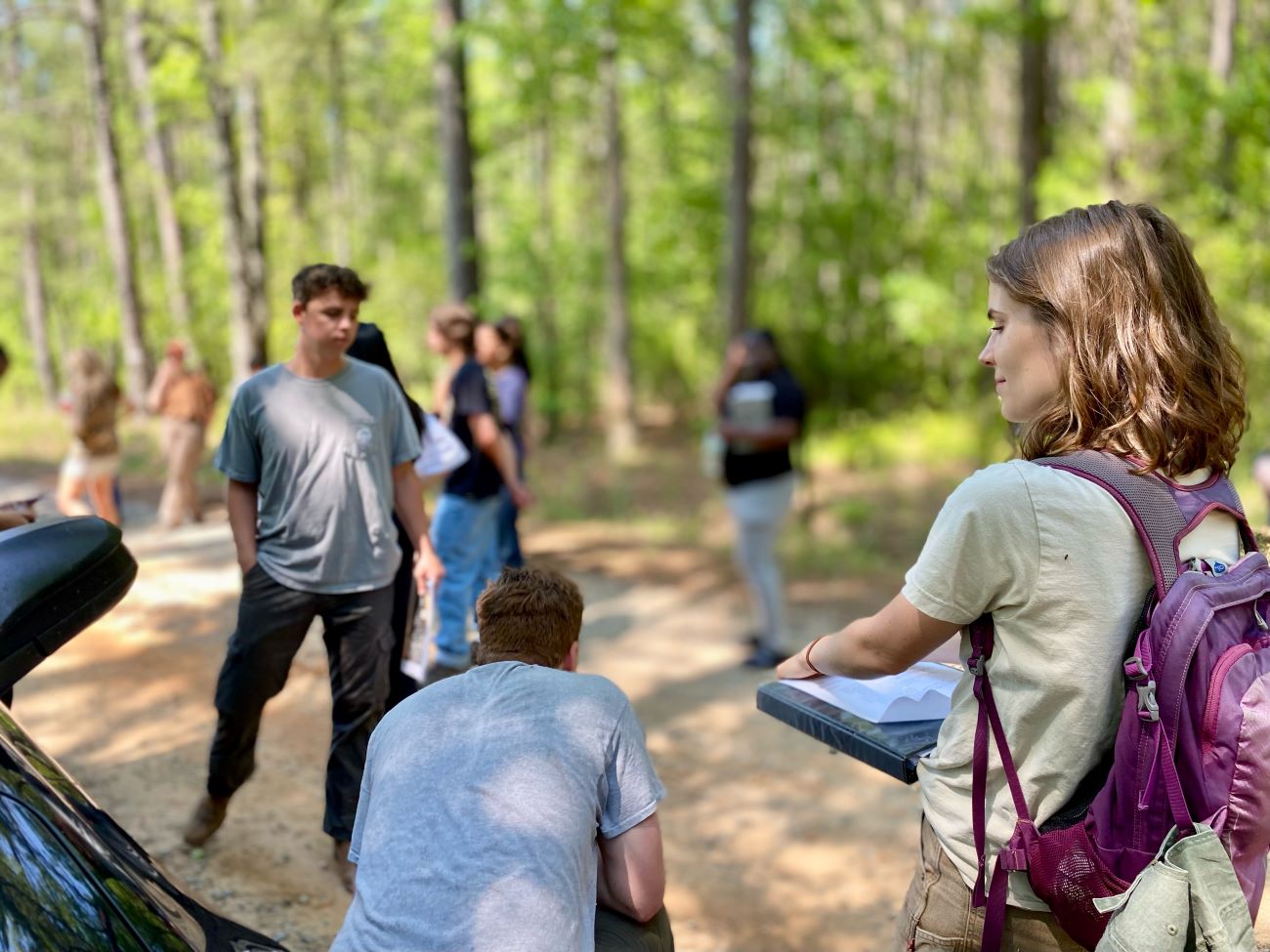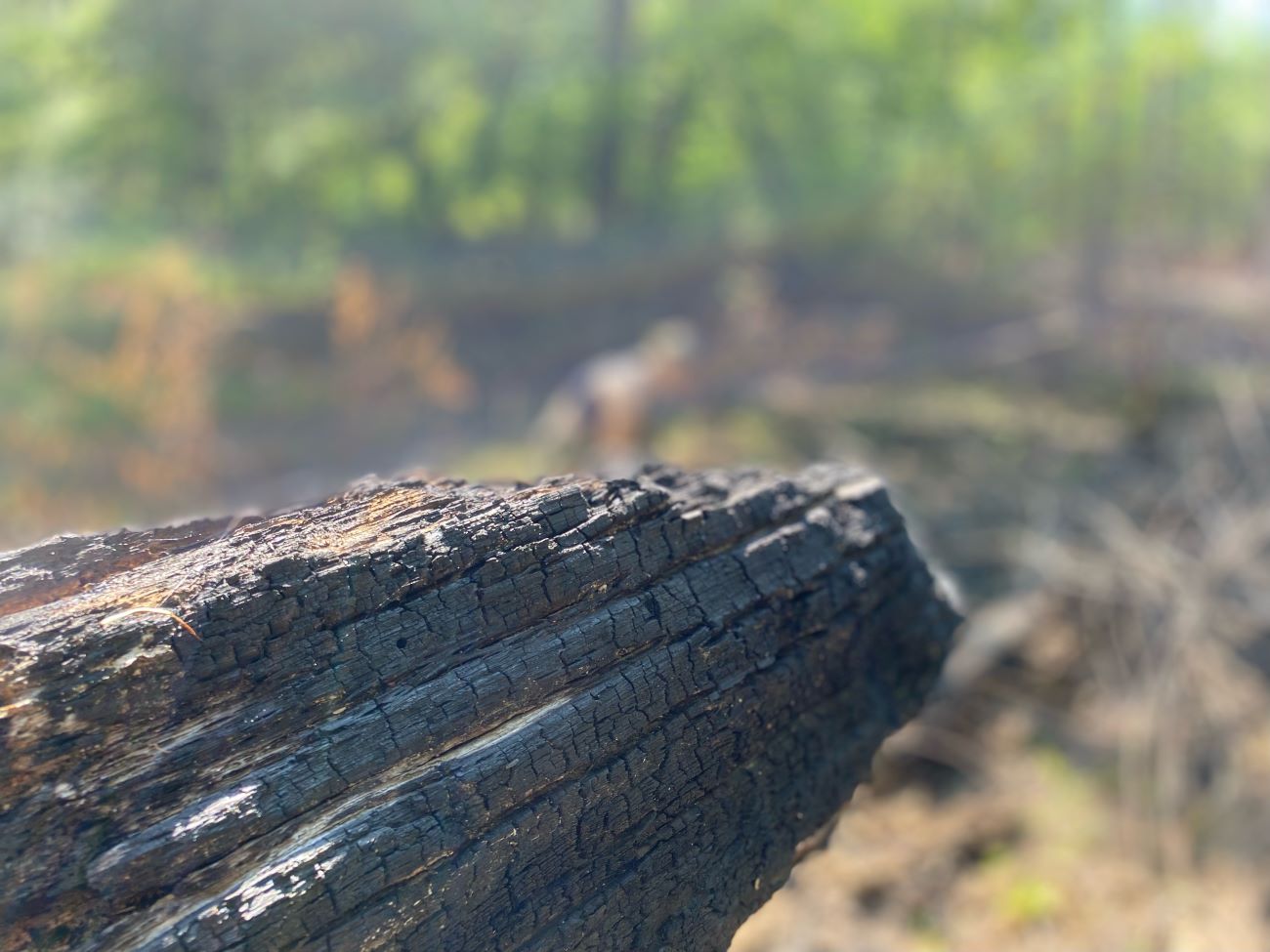Controlled burns: GCSU students learn best practices for healthy forests
S
ince the dawn of time, people have feared, fought and sought to control fire.
According to USA Today, fires are currently burning in Oregon, Washington, Montana, Nevada, Arizona and New Mexico. Just last week, 5,000 people fled the west Canadian town of Jasper. Before summer began—almost 90,000 acres of Californian grassland burned—15 times more than a year ago.
Even in Russia’s far east, a jaw-dropping 12.8 million acres of forest today are being scorched.
Fortunately, no wildfires are currently burning in Georgia.

The bi-yearly, upper-level biology and environmental science course teaches the importance of purposeful planning. Prescribed fires actually prevent unnecessary destruction.
“Because we burn intentionally, we haven’t had the kind of out-of-control wildfires you see in other parts of the world. Without controlled fire,” he said, “it’s going to literally all go up in smoke.”
This spring was Snyder’s third time teaching fire ecology. He talks about America’s long history of fire suppression that started in the 1920s. When forests thicken, one spark can cause huge fires, wiping out plant species and changing entire ecosystems.
Snyder trained to become a wildland firefighter. He works with the Georgia Department of Natural Resources and U.S. Forest Service to find opportunities for students to study the renewing effects of fire—in a state known for its forest management.
In 2017, according to Statista, Georgia conducted 83,588 planned fires on more than 1.2 million acres—more than any state except Florida.

Snyder took students on two long treks through Oconee National Forest in Putnam County to look for evidence of previous fire, see woodland growth before a controlled burn and return to understand the aftereffects.
Students learned how woods grow heavy with inflammable materials. When air is dry instead of humid, it only takes a lightning strike to ignite.
Controlled burnings get rid of these fuels—smaller trees, fallen logs, sticks, piles of pine straw and leaf litter. This allows more sunlight. Remaining ash is rich in nutrients like nitrogen and phosphorus. Both are good fertilizers.
“Fire is nature’s way of doing something important. Our plant systems create fuel and, at some point without prescribed burning,” he said, “it’s going to have the right ingredients—oxygen and the right moisture levels—to ignite and become destructive.”
On field trips, students took notes, sketched evidence of overgrowth and measured impact on wildlife. They noted weather, considered the role of wind and predicted how fire would move through the area.
Not a bad way to spend a class.
For recent environmental science graduate Hasari Berumdez Soto of Duluth, Georgia, it was a chance to put what he learned to practice. Originally from Costa Rica, Soto wants to work in sustainability and do field surveys.
On a sunny, blue-sky day, Soto spotted charred tree trunks, brushed aside leaf matter and looked for “fire breaks”—hillsides, streams or ponds that might block prescribed fires.
“The main reason I wanted to do my capstone on fire was to try something different,” Soto said. “It’s been nice getting out of the classroom, and check vegetation for signs of fuel. This area has a lot of quick fuel, like pine straw.”
The course also made a big impression on alumna Molly Hooks of Augusta, Georgia.

Hooks loves working outside and participated in a prescribed burn this spring as a forestry technician and lead timber marker in the Oconee Ranger District. She was just promoted to silviculture technician, someone who controls the establishment of growth and maintains a healthy, quality forest.
Her time at Georgia College in Snyder’s class, as well as Dr. Kalina Manoylov’s ecology and Dr. Dominic DeSantis’ herpetology courses, helped prepare her for this.
“I primarily researched plant population ecology, plant systematics, taxonomy and herbarium curation during my time at GCSU,” Hooks said. “These helped me understand the science of forestry. My statistics-focused classes also help.”
“Forestry has always been an interest of mine,” she added. “There were definitely some learning curves I had to navigate when starting this job. However, the background I developed in my time at GCSU helped me tremendously. Some of the post-burn areas we checked out in his class are the same areas I work in today.”
As a biology major, recent graduate Amber Stubbs was curious how fire impacts animal habitats. She wants to be a herpetologist. She learned snakes move underground during prescribed fires, while birds fly to safety.
“One of the things that really attracted me to Georgia College,” Stubbs said, “was when I heard professors there were doing research and a lot of it was hands on, out in the field, and students could find pretty interesting things to do original research on, like herpetology.”
“That really gives you a leg up—not only to get the coursework, but to get actual field experience to further your career,” she said. “That's a big, big plus at Georgia College.”

Maddie Ariail of Dunwoody, Georgia; Megan Martin of Forsyth County; Audrey Bryan of Dublin; and Anna Nguyen of Savannah studied as a group.
They collected evidence of past fires, noting burn scars. They determined how hot flames got and how high trees got scorched. They researched site histories, studied maps, specified borders, verified who gives permission for burns and listed neighbors to notify.
There’s wind direction to consider, smoke management and finding the right personnel.
“It's a significant amount of work,” Snyder said. “These plans can be anywhere from a page to 50 pages. As capstone students, they draw on everything in this course and everything else they’ve learned in college. There are a lot of decisions to make that I can’t make for them. They did a good job.”
A big surprise for students was how quickly plants rejuvenate. Two weeks after a fire, bright, green-leafed stems sprouted from smoldering, charred remains.
It was a lesson on the resiliency of life.
It’s good for students to learn how our public lands are managed, We can’t stop fire. But it can be used as a tool. Instead of destruction, we see rebirth.

Learn more about the Engage Pillar in our Imagine 2030 Strategic Plan
